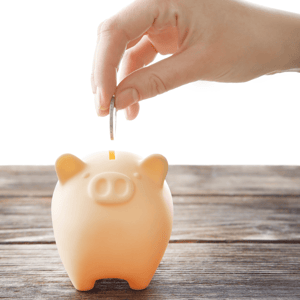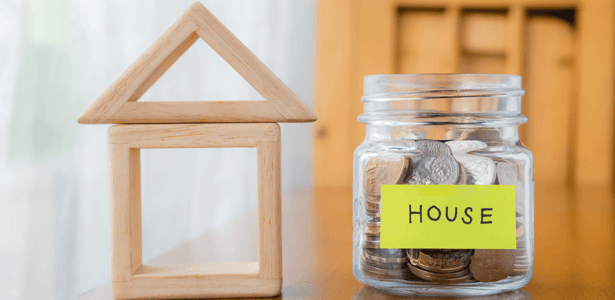Saving up a down payment for your first home can take several years. It’s a long and frustrating process, but you have to keep your eye on the prize. Saving for your down payment doesn’t have to be overwhelming; there are many tips and tricks to help you get there in no time.
1. Budget for It
No matter what you are trying to save for, evaluating your budget should be the first step. Take a look at your earnings and expenses, then plan how you will spend your money. Part of that plan should include money to be set aside for your down payment- even if its only an an extra $50 per month, this money will start to add up.
2. Save Anything Extra
Don’t neglect any extra money you have at the end of the month. In addition to what you've already budgeted, take any extra money at the end of the month and put it into your savings account. Again, it might be a small amount, but it’s better than spending the money on something frivolous.
3. Make It Automatic
It’s easy to forget to transfer money to your savings account, so it’s best to make it happen automatically. Whether you set something up with your employer to have a part of your paycheck go to savings or set up automatic payments with your bank, the “set it and forget it” approach works. The money goes out of your regular banking account and you’re not tempted to spend it.
4. Pay Off Your Debt
If you have any debts, it’s best to focus first on paying those off. Dividing your efforts can feel like you’re not really getting anywhere with your debt or your savings. Plus, you’re paying interest on the debt, which is like wasting money. Put a small amount of your money toward savings for the down payment, but focus much of your extra money on that debt. Remember, once it’s paid off, all of the money you’ve been putting towards your debt can now go to savings!
5. Stash Away Windfalls
Whenever you get a small windfall of cash – your tax refund, a company bonus, or cash back from your credit card, for example – put that money into your down payment fund. This is a great way to boost your savings when you’re only able to set aside a small amount of money each month. You’ll feel great when you see the jump in your account.
6. Ask for Cash
While it may seem rude to ask for money instead of gifts, most people sympathize with how hard it can be to save for a down payment on a home. Let your friends and family know that you’re really focused on saving up and that you’d appreciate gifts of money for birthdays and holidays as an alternative. Just be sure to put this money directly into your savings before you can spend it on a latte or new shoes.
7. Take a Second Job
You already work hard at your regular job, but if it’s not paying enough to get you where you want to be, consider taking on a second. Although the thought of working a second job is less than appealing, remembering your long-term goal will help keep you motivated; especially once you see your savings start to skyrocket.
 8. Raise Your Savings
8. Raise Your Savings
Whenever you get a raise, put that extra money into your savings account. After all, you are already used to living on your current salary, so you won’t miss that extra bit of money.
9. Cut Back Big Time
Big sacrifices can mean big savings for your down payment. When you look at your monthly expenses, identify which ones are the highest and look into ways that you can cut back. For most people, housing and cars are the biggest payments. Consider living with your parents for a year or taking on a roommate in order to accelerate your savings. If you’re married or living with your partner, see if you could get by with just one car instead of two. These are hard decisions to make, but they can get you into your new home much more quickly.
10. It’s the Little Things
Even if you can’t cut back on your major expenses, you might be able to reduce spending in other ways. Start cooking more of your meals at home instead of eating out. Wait until movies come out on DVD instead of seeing them in the theatre. Start planning your meals and grocery shopping based on sales. These little things make a big difference.
11. Host a Garage Sale
Your home is probably full of things you no longer need, so why not sell them and put the money into your savings? Start by setting a goal- for instance, if you want to get $500 by selling your old things, think of five things that you could sell for $100 each, 50 things you could sell for $10, or 500 things you could sell for $1. Most likely, it’s more of a blend, but you get the idea.
12. Resist Your Spending Urges
Ultimately, the hardest part about saving money is about reducing your spending. Whenever you think about spending, ask yourself: “Do I really need this?” If you do, see if there is a way to spend less money on it. For instance, a new jacket could cost $100 at a department store, but only $10 at the thrift store. Is the new jacket worth the extra money?
13. Research Your Options
Canadian law does allow you to borrow up to $25,000 from your RRSPs to use as a down payment on a home. While you have to pay that money back, it might be worth it to get into your new home quickly. Another option is to take money from your tax-free savings account. Some municipalities even have special programs for first-time home buyers. It never hurts to see what options are available to you.
The key to saving up the money you need for your down payment is to stay committed to your long-term goals even when it means short-term sacrifices. By implementing many of these tips, you’ll be well on your way to moving into your new home.




